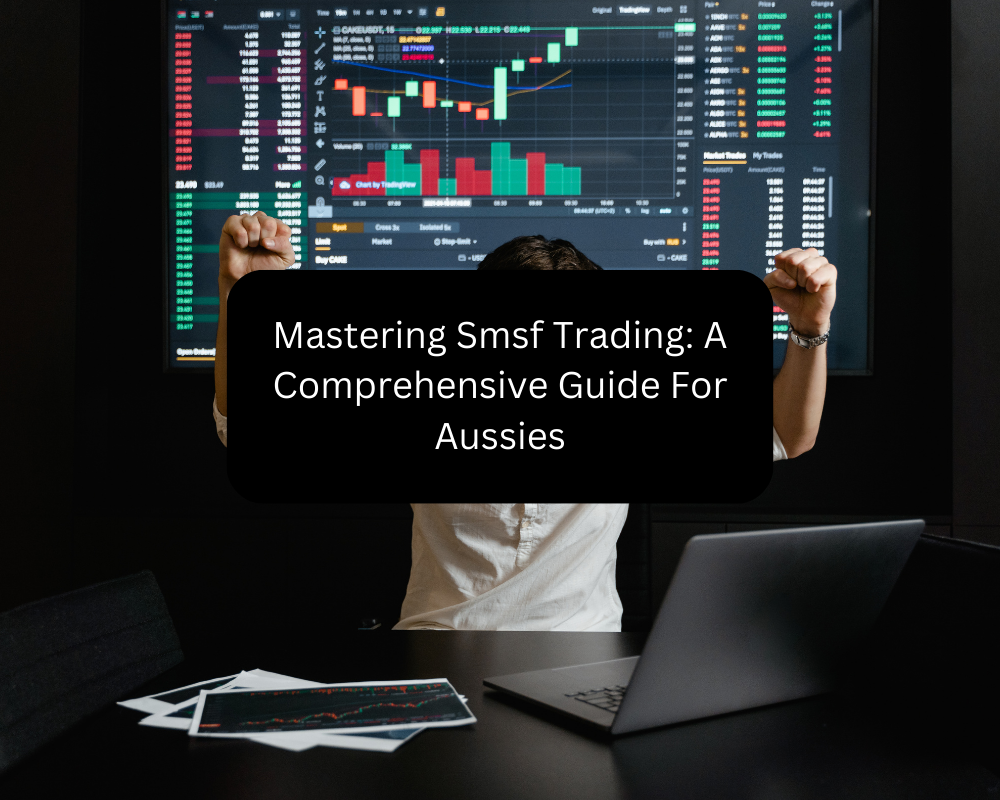Mastering Smsf Trading: A Comprehensive Guide For Aussies
Self-managed super funds (SMSFs) are gaining popularity in Australia, with almost 600,000 SMSF accounts holding over AUD750 billion in assets as of June 2021. SMSFs allow individuals to have more control over their retirement savings by allowing them to make investment decisions on behalf of their fund. This level of autonomy and flexibility has made SMSFs a popular choice among Australians, with many individuals considering it a critical component of their retirement strategy. However, managing an SMSF can be complex and requires a thorough understanding of the rules and regulations surrounding them. This article will provide you with a comprehensive guide on how to master SMSF trading in Australia, covering essential steps that every SMSF trustee should follow to ensure the success of their fund. You can also check out Saxo Bank to learn more.
Understand the basics of SMSFs
Before diving into SMSF trading, it is crucial to understand what an SMSF is and how it works. An SMSF is a private superannuation fund that you manage yourself, with up to four members. The members are also trustees of the fund, which means they are responsible for all investment decisions and compliance with regulations.
It is essential to note that SMSFs are regulated by the Australian Taxation Office (ATO), and trustees must follow strict rules and regulations. One of the critical requirements is that an SMSF must be established for the sole purpose of providing retirement benefits to its members. Therefore, all investment decisions must be made considering the members’ retirement.
The ATO also requires SMSFs to have an investment strategy that outlines the fund’s objectives and how those objectives will be achieved. The investment strategy should consider risk, diversification, liquidity, and return on investments.
Set up your SMSF
You may be wondering how to open an SMSF. The first step is establishing the fund by appointing trustees, choosing a name for your fund, and creating a trust deed that outlines the fund’s rules. You must also apply for an Australian Business Number (ABN) and Tax File Number (TFN) for your SMSF.
Once you have set up your fund, you must open a bank account in the fund’s name. This account will be used for all transactions related to your SMSF’s investments and expenses. The fund’s money should not be mixed with personal funds, and all transactions must be recorded accurately.
Understanding the rules and regulations surrounding SMSFs, such as contribution caps, investment restrictions, and reporting requirements, is crucial. Seeking professional advice from a financial advisor or accountant can be beneficial at this stage to ensure compliance and avoid any legal issues in the future.
Develop an investment strategy
As mentioned earlier, every SMSF must have an investment strategy that reflects the members’ retirement goals and complies with the ATO’s regulations. The investment strategy should be regularly reviewed and updated to reflect changes in the fund’s circumstances or members’ goals.
When developing an investment strategy, it is crucial to consider diversification and risk management. SMSF trustees must ensure their investments are diversified across different asset classes, such as shares, property, cash, and fixed income. It helps to reduce the risk of having all investments in one asset class.
It is also essential to consider the fund’s cash flow, liquidity needs, and potential tax implications. A financial advisor or accountant can provide valuable guidance in developing an investment strategy that aligns with your SMSF’s objectives.
Read: Crypto Aura: Infusing Everyday Living with Digital Magic
Implement your investment strategy
Once you have developed an investment strategy, it is essential to implement it effectively. It involves researching and selecting suitable investments that align with your fund’s objectives and risk profile.
SMSF trustees have many investment options, including listed shares, managed funds, term deposits, property, and even collectables such as artwork. However, it is crucial to remember the restrictions and regulations surrounding SMSF investments, such as prohibiting investing in assets from related parties.
It is also essential to regularly review your investments and make necessary adjustments to ensure they continue to align with your fund’s objectives and market conditions.
Monitor and report on your SMSF
As an SMSF trustee, you are responsible for monitoring your fund’s performance and complying with reporting requirements. It includes reviewing investment performance and tax obligations and lodging annual returns with the ATO.
SMSFs must undergo an annual audit by an approved auditor to ensure compliance with regulations. Keeping accurate records of all transactions and statements is essential to make this process smoother. It is also recommended to seek professional assistance from an accountant or auditor to ensure all reporting requirements are met.
It is also vital to regularly review your fund’s investment strategy and make any necessary changes to ensure it continues to align with your retirement goals and market conditions.




